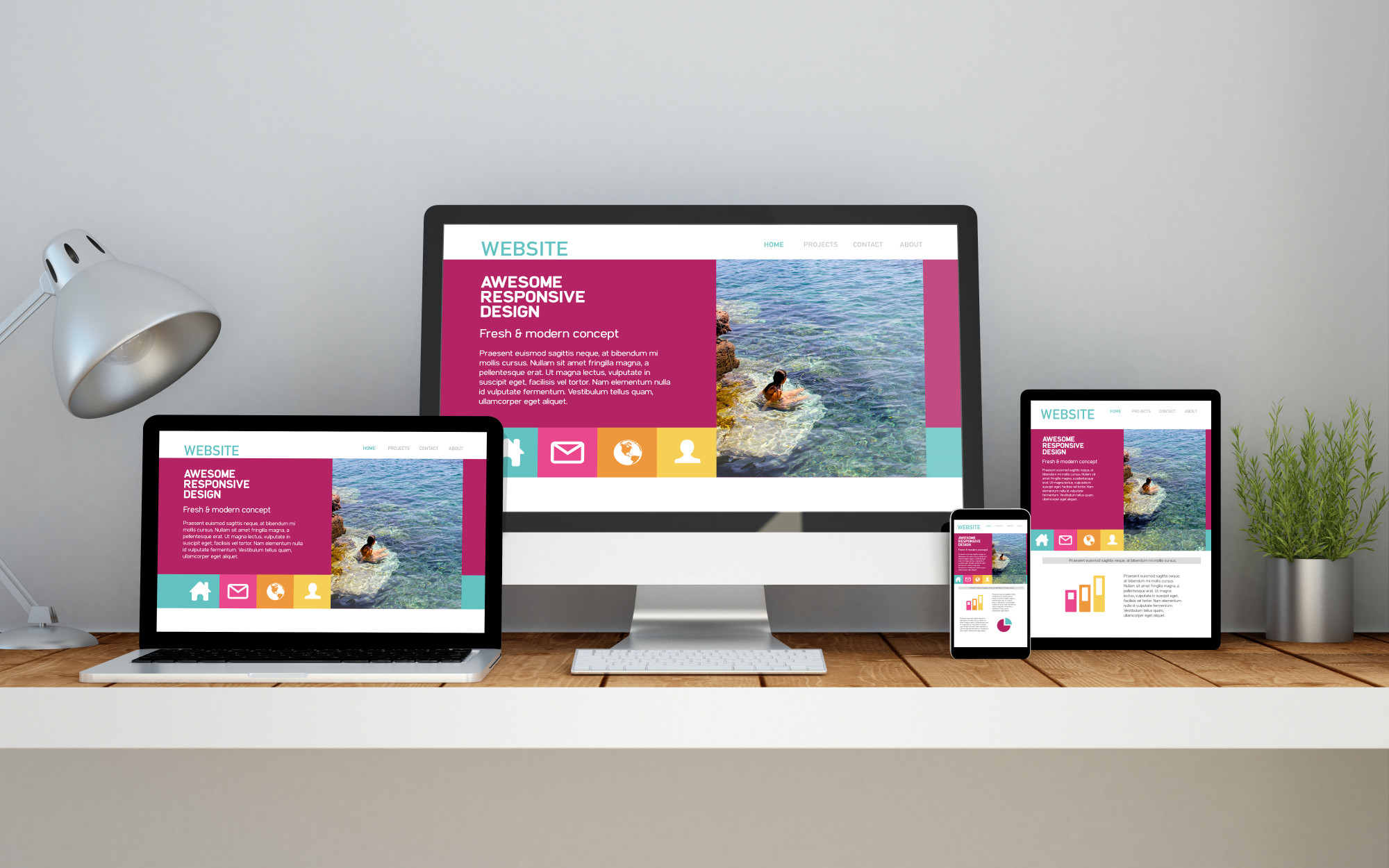Proven Strategies for Enhancing Your Site through Superior Web Design
A Detailed Introduction of the most effective Practices in Internet Design for Producing Instinctive and Accessible Online Systems
The efficiency of an online platform pivots significantly on its layout, which need to not only attract customers yet likewise guide them effortlessly with their experience. Comprehending these concepts is critical for designers and designers alike, as they directly impact individual satisfaction and retention.
Recognizing User Experience
Comprehending customer experience (UX) is critical in website design, as it straight affects how visitors communicate with a website. A well-designed UX makes sure that customers can browse a site without effort, accessibility the details they seek, and total wanted actions, such as buying or authorizing up for an e-newsletter.
Crucial element of efficient UX layout include use, availability, and appearances. Usability concentrates on the convenience with which users can achieve jobs on the web site. This can be achieved with clear navigating frameworks, logical material organization, and receptive responses mechanisms. Ease of access makes certain that all users, including those with impairments, can engage with the website efficiently. This includes adhering to established guidelines, such as the Web Content Ease Of Access Guidelines (WCAG)
Visual appeals play a crucial duty in UX, as aesthetically appealing styles can boost customer fulfillment and engagement. Color schemes, typography, and images should be thoughtfully selected to develop a natural brand identification while additionally promoting readability and understanding.
Ultimately, focusing on individual experience in web design fosters better individual complete satisfaction, encourages repeat gos to, and can substantially improve conversion rates, making it a fundamental aspect of effective electronic methods. (web design)
Relevance of Responsive Layout
Responsive style is a vital element of modern internet growth, making sure that websites supply an optimum viewing experience across a wide variety of devices, from desktop computers to smartphones. As customer actions significantly changes in the direction of mobile surfing, the need for sites to adapt flawlessly to various screen sizes has ended up being extremely important. This flexibility not only enhances functionality however also significantly impacts individual interaction and retention.
A receptive style uses liquid grids, adaptable photos, and media questions, enabling a natural experience that maintains performance and aesthetic integrity despite gadget. This technique gets rid of the demand for customers to focus or scroll flat, causing an extra user-friendly interaction with the material.
Additionally, internet search engine, especially Google, focus on mobile-friendly sites in their rankings, making responsive layout essential for maintaining presence and access. By embracing receptive style concepts, services can reach a wider audience and improve conversion prices, as customers are extra likely to engage with a website that uses a smooth and consistent experience. Eventually, receptive design is not merely an aesthetic selection; it is a critical need that mirrors a dedication to user-centered layout in today's digital landscape.
Simplifying Navigating Structures
A well-structured navigating system is important for boosting the individual experience on any kind of internet site. Simplifying navigation frameworks not just aids individuals in finding information swiftly yet likewise promotes involvement and lowers bounce prices. To achieve this, web designers ought to prioritize quality via the usage of straightforward labels and classifications that show the content accurately.

Integrating a search function further boosts functionality, allowing customers to find material directly. In addition, applying breadcrumb tracks can offer customers with context regarding their area within the site, advertising simplicity of navigation.
Mobile optimization is one more crucial aspect; navigation needs to be touch-friendly, with clearly defined buttons and links to accommodate smaller sized screens. By decreasing the number of clicks needed to accessibility material and guaranteeing that navigating corresponds across all web pages, designers can create a smooth user experience that urges expedition and decreases disappointment.
Focusing On Accessibility Specifications
About 15% of the international populace experiences some type of impairment, making it necessary for internet designers to prioritize accessibility standards in their jobs. Accessibility encompasses various aspects, including aesthetic, acoustic, cognitive, and electric motor problems. By adhering to established guidelines, such as the Internet Content Access Guidelines (WCAG), developers can create inclusive digital experiences that deal with all customers.
One essential practice is to make sure that all web content is perceivable. This consists of supplying alternative text for pictures and guaranteeing that videos have captions or records. Moreover, keyboard navigability is vital, as numerous users a fantastic read depend on key-board faster ways as opposed to computer mouse communications.
 In addition, shade contrast must be carefully taken into consideration to accommodate people with aesthetic problems, guaranteeing that message is understandable against its background. When developing kinds, labels and error messages must be descriptive and clear to aid customers in finishing jobs properly.
In addition, shade contrast must be carefully taken into consideration to accommodate people with aesthetic problems, guaranteeing that message is understandable against its background. When developing kinds, labels and error messages must be descriptive and clear to aid customers in finishing jobs properly.Lastly, conducting usability screening with people that have specials needs can offer indispensable insights - web design. By prioritizing availability, web developers not only adhere to legal requirements but likewise expand their audience reach, fostering an extra comprehensive on-line setting. This commitment to access is essential for a easy to use and truly navigable web experience
Making Use Of Aesthetic Power Structure
Clarity in style is vital, and using aesthetic hierarchy plays an important duty in achieving it. Aesthetic hierarchy describes the arrangement and discussion of components in a manner that clearly suggests their value and guides user attention. By tactically utilizing dimension, color, comparison, and spacing, designers can create an all-natural circulation that routes individuals with the content perfectly.
Making use of larger fonts for headings and smaller ones for body text establishes a clear distinction in between sections. Additionally, employing contrasting backgrounds or vibrant shades can attract interest to critical information, such as call-to-action buttons. White room is equally essential; it assists to prevent clutter and allows individuals to concentrate on one of the most vital components, boosting have a peek at this site readability and overall individual experience.
Another trick aspect of aesthetic power structure is the use of images. Relevant pictures can boost understanding and retention of information while also separating message to make web content extra digestible. Inevitably, a well-executed visual power structure not only enhances navigating however likewise fosters an intuitive interaction with the web site, making it extra most likely for individuals to attain their goals efficiently.
Verdict

Additionally, the effective use of visual hierarchy improves user engagement and readability. By focusing on these aspects, web designers can significantly improve individual experience, guaranteeing that online systems satisfy the diverse needs of all users while assisting in efficient communication and fulfillment.
The performance of an online platform hinges dramatically on its style, which need to not only draw in users yet likewise guide them effortlessly with their experience. By embracing receptive design principles, organizations can reach a more comprehensive audience and boost conversion rates, as individuals are much more most likely to engage with a site that supplies a constant and smooth experience. By adhering to established standards, such as the Web Material Ease Of Access Guidelines (WCAG), designers can create inclusive digital experiences that cater to all individuals.
White room is just as crucial; it helps to avoid clutter and permits customers to concentrate on the most crucial elements, improving readability and click this site general user experience.
By focusing on these aspects, web developers can dramatically improve user experience, making sure that on-line platforms meet the diverse needs of all individuals while promoting effective communication and fulfillment.